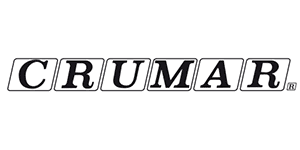
Crumar is an Italian manufacturer of digital pianos, synthesizers and organs, founded by Mario Krucianelli in the early 1970s.
Production began with Toccata (1970), Compac piano and Stringman (1972-1974) - quite budget, lightweight instruments with basic functional set. Multiman and Multiman-S were based on Stringman architecture (Multiman-s/Orchestrator, 1975-1977) featuring 6 timbres, a filter for wind instruments, a filter for strings, a vibrato effect (which is basically a low-frequency oscillator) with speed and depth control, as well as a sustain slider.
In the second half of the 70s - early 80s the company produced tonewheel organ clones – Organizer, T1, T1 / C, T2 and T3. For example, Organizer T3 (1981) was quite an alright sounding copy of Hammond and included a built-in Leslie simulator, a phaser, a reverb, a percussion effect, a keyclick function and a rhythm machine with auto-chords.
In 1978 appeared DS-2 mono synthesizer (with a 44-voice polyphony for strings). Two of its oscillators with digital control (quite a rare feature at that time) could generate a step wave and give rich sound thanks to a low-frequency oscillator and a voltage-controlled filter. At about the same time Performer was released with a 49-note polyphony and a quality string section that allowed you to get shades from gloomy to flickering with the help of an equalizer.
In 1983, owing to Bob Moog’s active participation, Spirit came out. The analog monophonic synthesizer generated sound with 2 VCOs (Minimoog had one) but thanks to a powerful filter, flexible modulation effects and a 3-mode arpeggiator it could produce a thick sound.
The middle of the 80s became the time of Bit series production. Comparing to Korg Polysix and Roland Juno 106, which were also within affordable price range but offered only one assigned oscillator per voice, Bit One assigned two oscillators, two low-frequency ones and two envelopes thus allowing you to hear six oscillators under two pressed keys in duophonic unison mode. In addition, the synthesizer was velocity sensitive making the filter and amplifier react to the touch. Bit 99 (due to 99 patches) featuring the wide variety of bass sounds and its rack version Bit 01 followed later.
It was the time when Crumar got into fatal cooperation with Music Technologies in an attempt to modernize Alles Machine complex digital additive synthesis which resulted in the construction of General Development System priced at $30000. Synergy, based on GDS principles, left Crumar out of the market when a much more commercially successful Yamaha DX7 was released. Synergy generated sound using additive synthesis, phase modulation and 32 digital oscillators. 4 oscillators per one of 8 polyphony voices; some voices used two expanding polyphony to 16 voices. The synthesizer has a unique mode tracking the keyboard, thus not limiting the performer within traditional fixed split options. Envelopes included 16 stages with numerous possibilities for the frequency and transition points change. Velocity sensitivity controlled the amplitude timbre. Despite the fact that Synergy couldn’t be programmed its factory presets, envelopes and sequencer allowed you to achieve an impressive result. Synergy II + and Mulogix Slave 32 supported integration with portable computers Kaypro II, which enabled sound editing as well as saving the sequencer data on a floppy disk.
Crumar was never able to succeed in making its wishes and capabilities meet the actual market situation which in 1987 led to folding the production. Acquired by the Italian company V.M. Connection in 2008 Crumar focused on the production of Mojo organs, as well as Mojo pedal keyboard which could be connected via MIDI to any compatible device, the editor for Mojo and Hamichord, as well as the interface for rotary speakers or digital simulator. In order to reveal and shine with all its possibilities, Hamichord required constant software update, and as a controller - MIDI implementation. It could also be configured with Hamichord Exp-edition which would function separately if you connected it to a virtual studio. Soon Hamichord M-C3 gave way to a more integral and organized Mojo.
Mojo generates a natural, voluminous organ sound and offers 22 virtual oscillators emulating the parameters of different organ voices. In Mojo there are also a number of Wurlitzer, Rhodes, Farfisa sounds the quality of which is by no means worse than its retro acoustic system effect. In 2016 a compact single-keyboard version of Mojo 61 appeared with a very attractive price within its range.
We should also mention such instruments by the brand as Bassman reminiscent of Moog Taurus, Trilogy released in the early 80s hiding the spirit of Moog Opus 3, Korg Trident and ARP Omni, and its light version of Stratus. Stratus deprived "trilogy" of its string section, advantageously compensating for this missing part with some unique specification. Stratus appropriated the ability to alternate the waveforms (square and saw) simultaneously subordinating different voices to one wave or another in one chord or solo, or, for example, added the octave modulation mode. Each of the 6 polyphony voices used one of 6 filters and 6 amplifiers.
At the moment Crumar is an independent manufacturer located not far from Venice and exporting its products from Italy exclusively online. Thus the brand managed to preserve traditions remaining a small company but at the same time acquiring a rich history.



